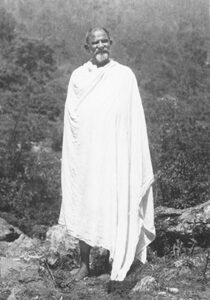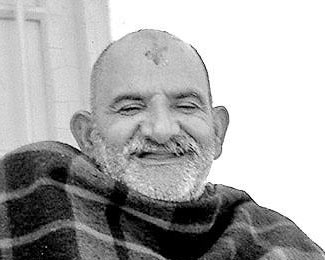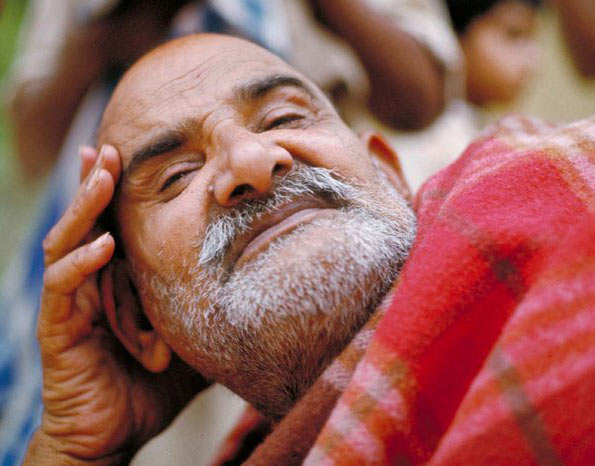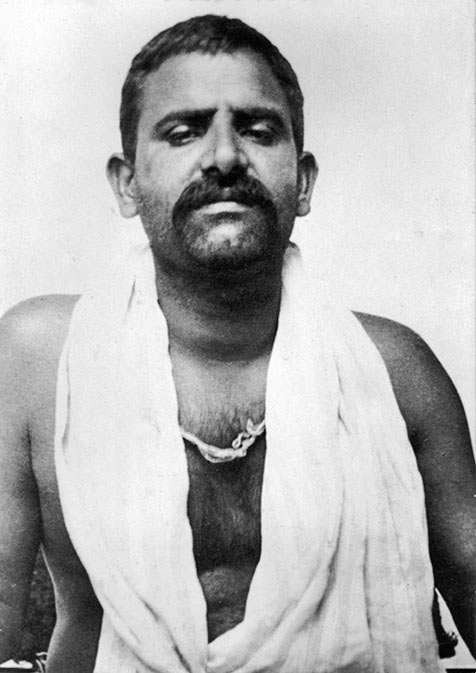About Maharajji’s Durbar
 Lovingly addressed as Maharaj, Baba was a master of the spiritual world. Some compared the gathering of devotees around him to the court of a king surrounded by his courtiers. Unlike a king's court, however, no one held a position in Baba's durbar nor did it have a set venue, time, or duration. Everyone could sit wherever they liked, and there was no obligation for visitors to bow to Maharaj. The durbar would assemble anywhere - in the ashram, by the side of the road, under a tree in the forest, or in the house of a devotee. It was always open to everyone. One of the remarkable features of Baba's durbar was that although it assembled and dispersed, its continuity was maintained. One durbar would end, but another would assemble in no time, wherever Baba went. His great love for people and their love for him assured an unbroken sequence of visitors.
Lovingly addressed as Maharaj, Baba was a master of the spiritual world. Some compared the gathering of devotees around him to the court of a king surrounded by his courtiers. Unlike a king's court, however, no one held a position in Baba's durbar nor did it have a set venue, time, or duration. Everyone could sit wherever they liked, and there was no obligation for visitors to bow to Maharaj. The durbar would assemble anywhere - in the ashram, by the side of the road, under a tree in the forest, or in the house of a devotee. It was always open to everyone. One of the remarkable features of Baba's durbar was that although it assembled and dispersed, its continuity was maintained. One durbar would end, but another would assemble in no time, wherever Baba went. His great love for people and their love for him assured an unbroken sequence of visitors.
The subject of conversation in Baba's durbar arose spontaneously and was never prearranged. Baba usually asked the new visitor three questions : What is your name? Where have you come from? What do you do ? It was often from these three questions that a conversation would ensue. Once, Baba put the third question as follows, "You, lawyer, what do you do?" Everybody burst into laughter, for Baba had revealed his omniscience. Maharaj just smiled.

 Because we're physical beings, and because we are identified with our physical bodies, we seem to think that a Guru, a real Guru, is also a physical body. But it's not that way.
Because we're physical beings, and because we are identified with our physical bodies, we seem to think that a Guru, a real Guru, is also a physical body. But it's not that way. Even the beggar becomes a king, the lame persons are able to walk or even fly, the blind is able to see this universe, and many of the difficult writings of the destiny which are at the forehead of a person can be wiped out. Even the fundamental essence of a person or a personality or a being can be made to change.
Even the beggar becomes a king, the lame persons are able to walk or even fly, the blind is able to see this universe, and many of the difficult writings of the destiny which are at the forehead of a person can be wiped out. Even the fundamental essence of a person or a personality or a being can be made to change. "He appeared and disappeared for years, being known by different names in various parts of India. His western devotees knew him as Neem Karoli Baba, but to the Indians he was simply Maharajji,” writes Baba Ram Dass of his guru in his book Miracles of Love. Ram Dass, formerly Richard Alpert, professor of psychology and colleague of LSD guru Timothy Leary, met Neem Karoli Baba in 1967. During that time, Alpert was quite a firm believer in the mysticism of psychedelic drugs. However, one meeting with Maharajji changed his whole view of life. And after Neem Karoli Baba left his body on September 11, 1973, Ram Dass, along with some other disciples, compiled stories and anecdotes about the sage. The result was Miracles of Love—an attempt, in the words of Ram Dass, “to give Maharajji’s darshan to all”.
"He appeared and disappeared for years, being known by different names in various parts of India. His western devotees knew him as Neem Karoli Baba, but to the Indians he was simply Maharajji,” writes Baba Ram Dass of his guru in his book Miracles of Love. Ram Dass, formerly Richard Alpert, professor of psychology and colleague of LSD guru Timothy Leary, met Neem Karoli Baba in 1967. During that time, Alpert was quite a firm believer in the mysticism of psychedelic drugs. However, one meeting with Maharajji changed his whole view of life. And after Neem Karoli Baba left his body on September 11, 1973, Ram Dass, along with some other disciples, compiled stories and anecdotes about the sage. The result was Miracles of Love—an attempt, in the words of Ram Dass, “to give Maharajji’s darshan to all”. It is clear that Maharajji has left us many names by which to remember Him.
It is clear that Maharajji has left us many names by which to remember Him.